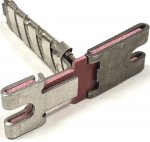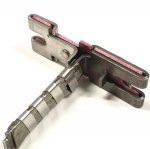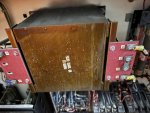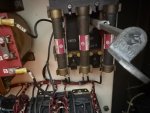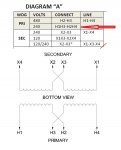@Rik Just as a reminder:
The original overload protection are the heat coil operated versions:
View attachment 949202
they are screwed into the overload protector ( spindle overload )
View attachment 949203
When you remove the element they look like this:
View attachment 949204
View attachment 949205
The currently installed elements are for 460V and are Clark #2427
those have to be replaced with the 230V versions Clark 2435
there is a three pack
available on eBay
Note:
the current ratings for fuses and overloads are usually 50% at 460V then the ratings at 230V
the rule of thumb is double voltage cuts current in half.
so you may have to change the fuses currently protecting T1 and T2 with double the current rating currently installed if they blow when everything is turned on and T1 and T2 are reconnected to 230V
the same goes for the 3 main disconnect fuses F1 F2 F3
From 10A to 20A





